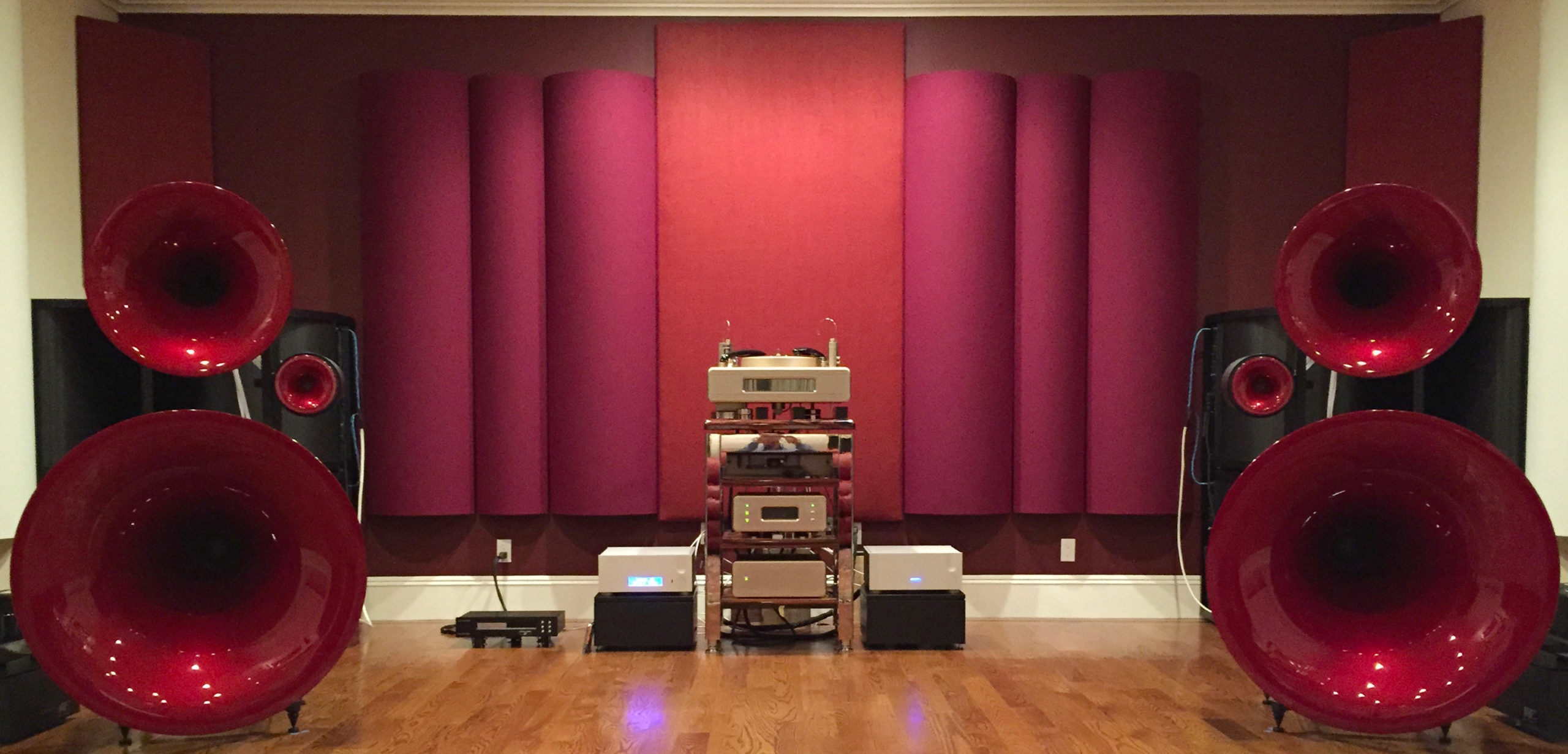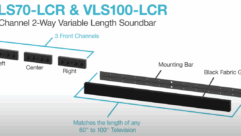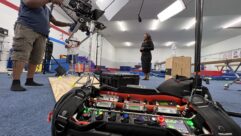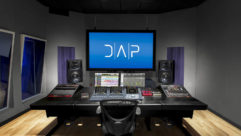Quick and easy fixes that facilities can do on their own.
For those fortunate enough to build brand-new sound facilities, soundproofing and acoustical treatments are typically incorporated into the budget. However, many people in the sound and video business end up retrofitting existing spaces, which tend to be noisy, bad-sounding rooms. In these cases, facility owners can’t go back and rebuild the space to incorporate better acoustics, so they must find ways to mitigate bad sound.
The good news: there are still options that can be incorporated to help. Some are quick and relatively inexpensive, while others might require remodeling by skilled workers.
Where are the worst sound leakage problems? How do you alleviate them?
Door seal kits and/or acrylic window inserts are quick and easy ways to fix air gaps in a room. This is essential to reducing noise entering and exiting the space. Basic soundproofing doesn’t need to be difficult or expensive.
Doors
Doors are big holes in the wall that have open gaps even when closed. Specialized door seal kits are designed to effectively seal the biggest sound leak in the room: door frame and threshold gaps. These easy-to-install kits can be retrofitted onto nearly any solid-core door. However, they must be used with a smooth door-frame threshold, like wood, aluminum or marble flooring. Those opting for this solution should have some skills using power tools; they’ll need to size the components to the door and frame by cutting the aluminum channels with a chop saw. If it isn’t installed properly, it won’t work. Fortunately, it’s within the skill range of many people; and there are how-to videos available that show precisely how to use these kits to effectively seal a door.
Windows
Many commercial facilities typically have standard windows which, like doors, can have a lot of sound leakage. While it is possible to replace a window with a soundproof version that doesn’t open, that is expensive and requires a lot of work. For both video editing suites and small recording studios, a dedicated voice-over booth with a window between the engineer and the voice talent is typically required. In these scenarios, there is an ingenious product called “acrylic window inserts” that help solve that problem. These clear acrylic sheets are mounted in a magnetic accordion-like frame (similar to a refrigerator door seal) that attaches to self-adhesive steel strips, which are mounted around existing window framing, covering over and sealing off the window itself.
They can also be removed for easy cleaning. As with the door seal kit, it’s important to make sure the window frame is measured precisely, and it may be necessary to install a few extra strips of wood or metal to ensure a tight seal.
How does increased isolation and mass help to reduce noise?
T-grid ceiling systems are almost completely open to sound leakage. One way to deal with these types of ceilings is to install heavier/denser tiles; some of these even have a thick vinyl backing layer that helps mitigate sound leakage. However, generally, it is very difficult to correct these problems in retrofit projects.
Additionally, sound can leak through lightweight building materials, such as standard sheetrock on metal or wood studs. To help soundproof rooms with “thin” (albeit standard) walls and ceilings, Green Glue creates an elastomeric anti-vibration “buffer” layer between two layers of sheetrock. This effective and affordable solution is available in standard caulking gun-sized tubes. The rubbery material is applied in a thin layer between two pieces of sheetrock – on walls and ceilings. The wall and ceiling boundaries are then sealed with acoustic caulk. The installation process of this product is relatively simple; and it increases the mass of the walls and ceilings while helping to isolate the room from its neighboring spaces.
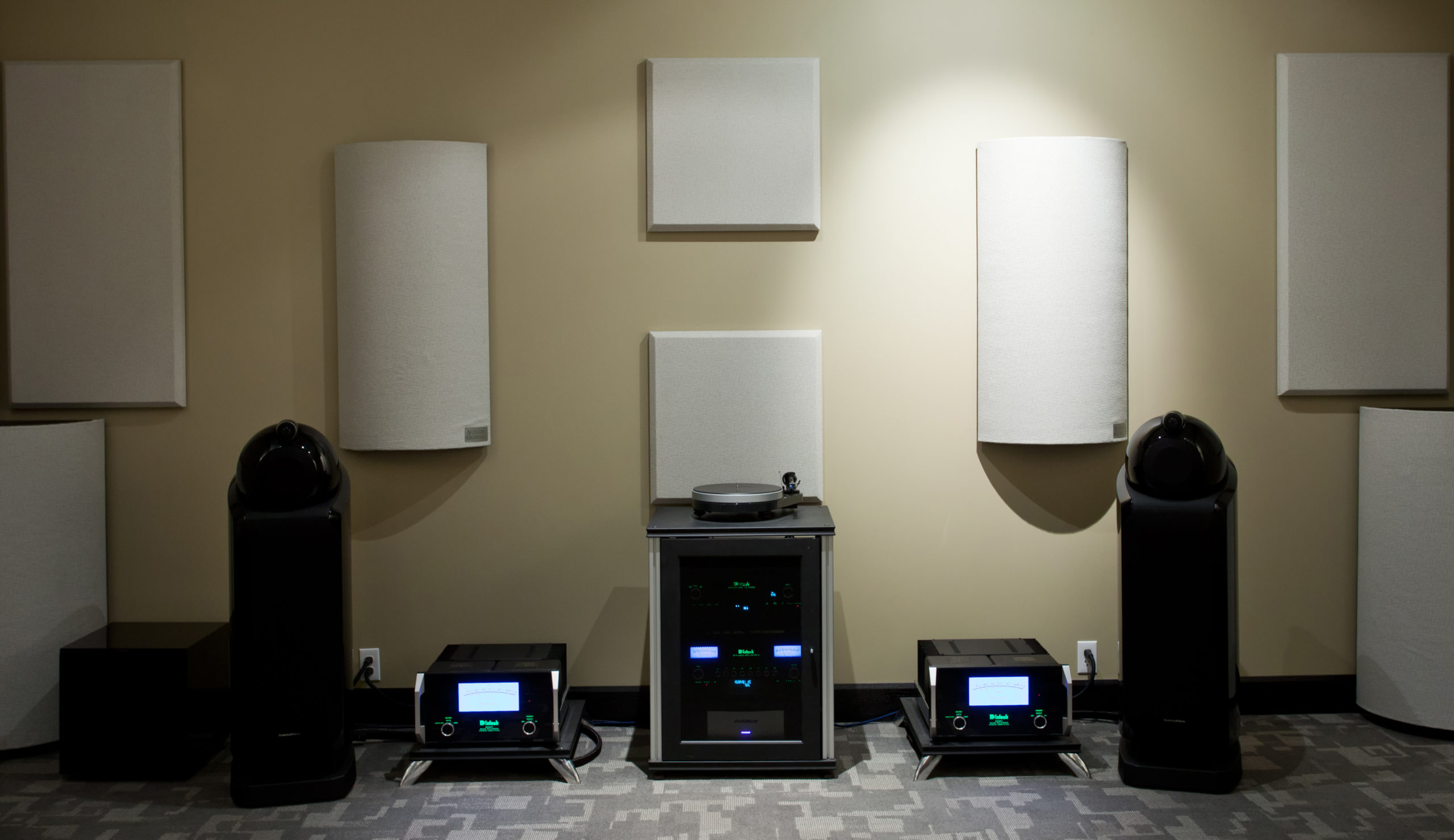
Room Treatments
Any sound source becomes increasingly difficult to hear clearly as you move further away from it in a room, especially those with too much echo and reverberation. Even a room that is suitably soundproofed against noise leakage will nearly always require acoustical treatments to improve the sound. There are only two tools that will help a room sound better – absorption and diffusion. The proper amount and placement of both will mitigate the strong flat-surface reflections that create destructive interference between the direct sound source, as well as the untreated sound reflections (echo and reverberation). A 50/50 combination of diffusion and absorption is a recommended starting point, and every surface does NOT need to be completely covered. Treating only three to eight percent of the total surface area of the space with absorption and diffusion often yields excellent results.
Most people are familiar with absorption, which typically uses a fiber-based material that reduces sound reflections. There are many types – fiberglass, recycled cotton, mineral wool and foam – at many price points. The thicker the material, the more sound it absorbs at increasingly lower frequencies. There is a wide range of products that absorb sound and work to varying degrees. However, if any space has too much sound absorption, it can become increasingly “anechoic” (completely without sound reflections). It would be very discomforting to work in this type of space. Additionally, if a room is too sound-absorbent, it can be difficult to accurately discern pitch, which is critical in places such as music venues.
Most fiber-based absorbers are only effective above about 200 Hz, which is often sufficient for speech.
However, other sound sources, like musical instruments, may require low-frequency absorption in rooms. In these cases, membrane-based low-frequency absorbers are recommended. If well-designed and correctly placed, these can be effective to below 40Hz.
Properly designed diffusors located on large flat surfaces will spread out reflected sound energy instead of absorbing it, which helps to retain the natural sound “ambience” in a room. This makes it easier to hear more clearly because the strength of the reflections is greatly reduced – the space sounds more naturally-reverberant rather than muddled. The two most-used product types are phase-coherent diffusion, which includes cylindrical diffusors, and Quadratic-Residue Diffusors (QRDs).
There are many acoustical products available to mitigate bad sound, but the basics are relatively uncomplicated.
There are two tools for less noise: increasing isolation (both air- and structure-borne) and increasing structural mass, referred to as “soundproofing.” Additionally, there are two tools for better sound in rooms: absorption and diffusion, referred to as “room treatments.” With a wide array of price points and effectiveness of solutions, it is helpful to find an experienced acoustics professional to guide you through soundproofing and room treatments most suited to your projects.
